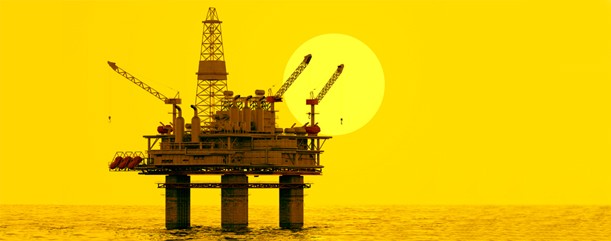
IN BRIEF
The Geo People supply client representatives for site surveys either as QCs or marine mammal observers. Site/hazard surveys are acquired before rig placement, for pipeline surveys, and on well-head surveys within the oil and gas sector. The site survey data is used by drillers to anticipate the condition of the rock into which the well is to be drilled, gaining insight into how the initial drilling is to be carried out. Site survey duration is typically four to five days, although adverse weather and logistics in the marine environment sometimes extend this.
There is a legal and operational requirement for detailed information to be acquired in the vicinity of a proposed well prior to drilling, providing information about the seabed and the geological layers immediately below it. This is so that the drilling and related equipment like anchors can function properly, avoiding potentially fatal gas pockets or buried river channels.
IN DETAIL
QC for site/hazard surveys
For a rig site/hazard survey, the primary objectives of the QC are to define any shallow gas hazards and buried river channels, to map any highly fractured zones that may result in excessive mud losses or indicate historic slumping, to accurately define the bathymetry, particularly in the region of the drilling locations and to identify any debris, well heads or cables on the site. At the end of each project, the client representative produces a final QC report including an executive summary, QC test results, procedures, a description of problems, QC techniques, decisions, time accountability, communications, recommendations and a detailed report of the survey. The Geo People understands the importance of the final report and ensures that these are received by the client within the specified time frame.
The technique used for high resolution site surveys is the same as for conventional 2D seismic but with a smaller source typically 40 to 400ci. Sometimes a sparker is used for the source with its energy coming from an electrical discharge. As we are only looking at the top few layers of the sediments, only a short streamer is used, between 600 and 1200m in length. In order for the higher frequencies and high resolution image to be acquired, the streamer is towed at a smaller depth below the surface, so acquisition has to take place in relatively calm weather conditions.
Side scan sonar is used to determine the texture, topography and character of seabed sediments as well as locate debris, boulders, outcrops, pipelines, well heads and other equipment on or just below the sea floor. The operating frequency varies depending on manufacturer and intended purpose. Multibeam echo sounders are used to provide densely sampled digital terrain models to further define the topography and assist in planning the location of pipelines, wellheads and platforms etc. The boomer is an electro-mechanical system producing a low power, high frequency acoustic pulse for a high resolution image of near surface sedimentary layers. Now replacing the boomer, the chirp profiler, a small marine vibrator, is preferable as it provides a more consistent acoustic input signal. For physical tests, sea floor coring is carried out for determining the conditions of the seabed.
MMO for site/hazard surveys
Marine mammal observers (MMOs) and passive acoustic monitoring observers (PAMs) are employed during site surveys when marine life is subjected to the noise of airguns, sparkers, chirp profilers or boomers. The exclusion zone in UK waters is 500m as for conventional seismic surveys. MMOs use high powered 7 x 50 marine binoculars with reticules for monitoring for at least 30 minutes (or an hour in deep water) prior to and during soft start procedures and during the acquisition or piling. Their role is to ensure that the JNCC or other guidelines appropriate for the country of operation are followed and that the events and any non-compliances are logged. During times of poor visibility, passive acoustic monitoring (PAM) equipment is used to detect clicks, whistles and moans from cetaceans. MMOs report on the protected species mitigation survey efforts and ensure that the requirements set forth by the guidelines for minimising acoustic disturbance and injury to marine mammals from seismic surveys are fulfilled. Marine life such as seals, whales, dolphins, porpoises and sea turtles are all referred to in the guidelines. In addition to keeping noise levels at the lowest practicable levels, the recommendations contained in the guidelines should assist in ensuring that marine life, in areas of proposed airgun and other source activity are protected against possible injury.
MMOs and protected species observers (PSOs) from The Geo People are all graduates in marine biology or environmental science or equivalent. They are trained in the use of JNCC (Joint Nature Conservation Committee) guidelines (or other guidelines appropriate for the country of operation) and ensure that the guidelines and special recommendations are adhered to by the seismic contractor. There are many courses available and the Marine Mammal Observer Association website is a good place to search. The Geo People are proud sponsors of the Marine Mammal Observer Association (MMOA).
The Geo People provides PAM (passive acoustic monitoring) equipment with 100% redundancy for use during night time operations or in the day when visibility is poor. PAM operators are able to deploy this equipment during mobilisation and pack up on completion ready for shipping back, checking all the equipment on the inventory. The Night Hawk III system from MSeis Ltd is what The Geo People commonly use. Again good courses may be found on the MMOA website.
- Sections
- Services
- Marine mammal observation
- Renewable energies
- HSSE
- Marine seismic
- Land seismic
- Seismic processing & interpretation
- All services







